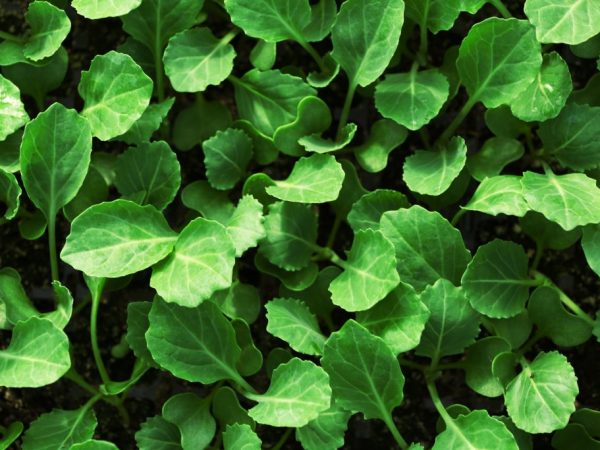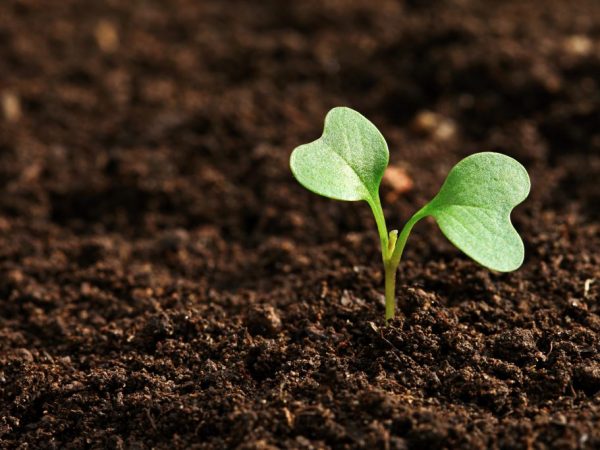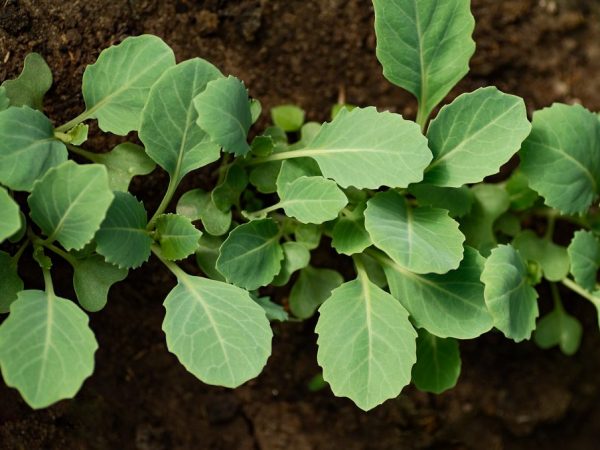Rules for planting early cabbage for seedlings
The first days of spring is the time to prepare seedlings for the garden. The planting of early varieties of cabbage for seedlings also deserves attention.

Rules for planting early cabbage for seedlings
Variety selection
Cabbage grows in almost every vegetable garden, is healthy and has an excellent taste. A wide variety of dishes are prepared from it, consumed fresh, salted, fermented and stewed. To get a good harvest of this vegetable, you need to grow high-quality seedlings.
The first step is to determine the variety that you will grow. The modern seed market offers many varieties of early maturing cabbage for growing seedlings. Only a few of them are most popular with gardeners:
- June;
- Kazachok;
- Ditmar early;
- Parel;
- Copenhagen market;
- Golden hectare;
- Transfer;
- Dumas;
- Zarya;
- Malachite.
Early cabbage varieties do not give such large yields as mid-ripening and late ones. The weight of cabbage heads of early varieties reaches no more than 1 kg with an average density. The palatability is high enough. The heads of cabbage grow juicy and sweet.
Purchase of planting material
For growing seedlings of early cabbage, you need to choose good seeds. The quality and volume of the head of cabbage yield depends on the quality of the seed.
Several secrets of the correct choice of material for sowing:
- It is better to buy seedling seeds in horticultural markets: this way there are more chances to buy high-quality and original seed material.
- If possible, it is better to purchase seeds from several producers: if one variety does not grow, the second will be able to compensate for it.
- High-quality seeds will be packed in thick paper with the name of the manufacturer, a short description of the plant, planting rules and agrotechnical features on it.
- In accordance with the state register, the package must contain 2 names of the plant variety: in Russian and in Latin.
- The shelf life of seeds can be determined not by the stamp on the packaging, but by requesting a certificate from the sellers, which indicates their germination and the validity of the analysis - from six months to a year.
Substrate preparation

Soil quality plays a big role in plant development
Soil quality plays an important role in the successful germination of seedlings and the production of quality seedlings. In a poor soil mixture, even the highest quality seeds may not give the expected result.
Planting early cabbage for seedlings is carried out in a special substrate. Harvesting has been carried out since the fall.
Such a substrate can be bought at a gardener's store, or you can make it at home:
- humus - 1 kg;
- turf - 1 kg;
- ash - 150 g per bucket of soil.
The ash in such a soil mixture will become not only an excellent source of vital components for seedlings, but also disinfect the soil from various diseases.
For early cabbage for seedlings, you can use another soil mixture, for example, based on peat.The main condition for a soil mixture is its moisture and air permeability.
The only rule is the use of garden land in which plants of the Cruciferous family were previously grown is strictly prohibited. Such soil is likely to contain infections.
Landing time
Those involved in the cultivation of this culture know that the planting of early cabbage for seedlings is carried out at a certain time. It also affects the quality of the seedlings and the yield of the heads.
What is the best number to sow the seeds? It is necessary to plant seeds of an early variety in March - on the 26-28th. This is the ideal time for the seedlings to germinate in March, and to get stronger in April and be ready for planting in open ground.
Seed disinfection
Disinfection is a mandatory procedure that is carried out before planting seeds. It allows you to disinfect seed material, eliminate the risk of infection with black leg, powdery mildew. After its completion, the cultivation of seedlings will be successful, and its quality will be excellent.
When buying treated seeds, it is enough to carry out one simple manipulation: steam them in warm water (about 50 ° C) for 20 minutes. and then immersed in ice water. Thus, the seeds will be hardened, their immunity to diseases will increase.
Not all cabbage seeds can be processed this way. therefore it is important to read the instructions on the packaging.
Before planting seeds, they are sometimes soaked in a weak solution of potassium permanganate for half an hour. This is also one of the methods for disinfecting seedlings.
Sowing features

Seeds need to be prepared for planting
Planting seeds for early cabbage seedlings in March has some peculiarities. In order for the plants to grow strong, stocky and easier to transfer the planting to the garden, they need a pick, so they are first sown in volumetric containers, and then seated separately.
It is necessary to plant in special seedling boxes or trays. First, the soil is moistened abundantly, then the seeds are planted. Until the seedlings germinate, you do not need to water them: it will provoke the appearance of a black leg.
The planted seedlings are placed on a windowsill where there is good daylight. At the same time, it is important to protect young seedlings from the sun's rays, which are very dangerous in spring.
After mass germination, seedlings are thinned out. At this stage of growth, plants need to leave a nutritional area of 2 x 2 cm.
Seating
This is one of the main stages of growing early cabbage seedlings. In 10 days after thinning, the seedlings will grow up and release 1-2 leaves. This is the time when they need to dive into special cassette containers, maintaining a 3 x 3 cm landing pattern.
Plants can be planted in separate containers 2 weeks after picking. You can plant seedlings in pots, plastic glasses. The size of such a container should be 5 x 5 cm.
Before planting seedlings, new containers are treated with a weak solution of copper sulfate to prevent the appearance of fungal infections.
Planting care
To grow high-quality and strong seedlings, it is important not only to plant them correctly, but also to provide competent and timely care during growth.
Lighting
This plant does not have enough daylight on the windowsill. Usually, the seedlings are supplemented with an LED lamp at home. In general, plants require daylight: at least 14-15 hours a day.
Moistening the soil
Water the plants regularly because the crop loves water. Moistening is carried out as the soil dries out. To eliminate the risk of overflow, the soil is periodically loosened. Additionally, the procedure increases the moisture and air permeability of the soil.
Temperature regime

Seedlings are hardened before planting
Correct cultivation of seedlings implies compliance with the temperature regime. Until the sprouts appear, the temperature in the room should be at least 18 ° C. After the seedlings sprout, it is reduced to 15-17 ° C in the daytime, 8-10 ° C at night.
Such sudden temperature jumps are necessary to harden the plants and prevent them from stretching. In such conditions, white-headed plant varieties develop well.
A sharp decrease and increase in the temperature regime leads to a decrease in yield. The temperature regime may fluctuate, but should be within 5-8 ° С regardless of the time of day.
Food
If you are going to sow seeds for seedlings, it is worth stocking up on fertilizers for it in advance. A balanced diet, consisting of all nutrients, is necessary for cabbage for full growth, development and resistance to disease.
While the plants are in the apartment, they are fed:
- The first meal is carried out a week after the pick. Prepare the following solution: ammonium nitrate, potassium - 2 g of each component, phosphorus - 4 g. Mix dry substances, dissolve in 1 liter of water. This volume is enough to feed 60-70 plants. Before fertilizing them, the soil is moistened. This prevents the risk of burning young roots.
- The second meal is carried out 15 days after the first. As a top dressing, the same solution is used as in the first case, only the dose of the substances used is doubled. If the seedlings turn yellow after the first feeding, use a different composition of feeding, for example, fermented manure: 1 liter is dissolved in 10 liters of water.
- The last feeding of the seedlings is carried out a couple of days before transplanting to the garden. Prepare the following composition: potassium - 7 g, phosphorus - 5 g, ammonium nitrate - 3 g. All this is mixed and dissolved in 1 liter of water. This hardening top dressing works well on the seedlings and helps them to take root more easily in the open field. Instead, they use a ready-made version - the drug "Kemira Lux".
Hardening
When the seedlings grow, hardening is carried out. This procedure has a beneficial effect on the growth of the root system and improves the adaptability of plants in open soil.
Hardening is carried out 10 days before transplanting to the garden. On the first day, on the window where the seedlings stand, open the window. For the first time, 2-3 hours of airing is enough.
In the next few days, the seedlings are taken out onto the balcony and placed under the sun. At lunchtime, it is shaded so that the tender and young leaves do not burn under the scorching sun.
On the sixth day, the plants are stopped from watering and taken out to the balcony. In this room, cabbage is kept before transplanting into open soil. As it dries, the soil is moistened.
Planting of plants is carried out at the stage of the appearance of several leaves. Before diving into the garden, the soil is abundantly moistened so that the plants can be easily removed.
Disease prevention
How to cope with diseases of cabbage seedlings:
- To destroy the black leg, the soil in the seedling boxes is dried, the plants are sprinkled with ash, then the substrate is loosened.
- To destroy root rot, seedlings are treated with Rizoplan or Trichodermin.
- To destroy the cruciferous flea, seedlings are treated with Intavir.
Conclusion
Growing seedlings for early cabbage is a laborious and cost-effective process. Subject to all the rules of agricultural technology, care and maintenance conditions, it is possible to get strong, healthy and high-quality seedlings.


